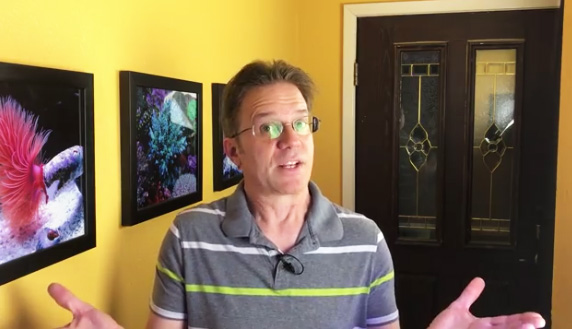10 years ago…
“I never thought I’d have this problem. I got the biggest skimmer I could buy. I change my water. I did all the things they told me to do. I got an RO/DI system. And yet…I have phosphates.
“It was hard to admit. They just see the tank, they see the fish. First, all I did was mix up a new batch of saltwater and test that. Then I could post a picture, and look, I mean our water was great. But I knew it wasn’t….
“…I didn’t even know it was a problem at first; because I didn’t test for phosphates, it wasn’t even important. I just thought I could feed the tank and skim the water, and everything would be great. But the algae kept coming back. It was on the glass, it was on the rocks, it was even showing up on the sandbed. I had to buy a test kit and test my water.
“I thought the kit was wrong. My fish were happy, they were fat, they loved nori. I would always clean the glass right before someone showed up, but within a few hours it was turning green, and then brown. I’m ashamed. I just want a solution…”

Mark Levenson, the marine aquarist behind Melev’s Reef, talking about his favorite method of controlling phosphate and stopping nuisance algae growth.
Marc Levenson of Melev’s Reef has been a long time proponent of Phosphate Rx vs. using GFO (Granular Ferric Oxide) to reduce phosphate levels in his reef aquaria.
“I’ve been using Phosphate Rx for a decade, and it’s my preferred product to keep PO4 levels under control,” writes Levenson. “No GFO for me. I’ve mentioned it many times, but decided “I guess I need to do a video about this product after all.” I do realize I could have explained the process in about sixty seconds, because it’s that simple, but I wanted this to be a fun video.”
Included in the video, Levenson notes some tips for using this lanthanum chloride-based product, such as the use of filter socks to capture the main precipitate, lanthanum phosphate, generated after dosing. He also re-addresses the concerns surrounding the use of this product as it relates to fish and coral stresses, rebutting years of personal experience.
Watch “How to dose Phosphate Rx” now:





